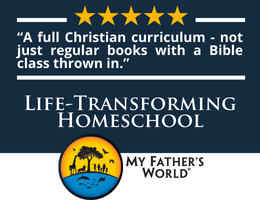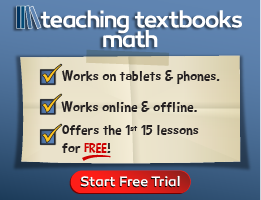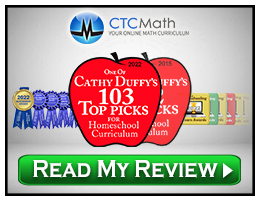Consumer Math teaches practical math applications at a high-school level and should work for students who struggle with math as well as those who have strong math skills.
For students who find math challenging, the course reviews basic operations (addition, subtraction, fractions, etc.) in relatable contexts, such as translating monthly to yearly costs and calculating discounted prices. Similarly, students who struggle with fractions, decimals, and percents might find them easier to understand when presented in financial contexts.
Advanced students can breeze through sections covering familiar topics and focus on the financial concepts and applications that require some algebra and geometry. The algebra involves relatively simple equations, but students need to know how to manipulate equations to calculate things like average monthly net income or the amount of money they can spend for a home based on the down payment they have saved.
The course is presented in 20 multi-part lessons. Students should complete five lessons per quarter, spending about 45 minutes per day, five days per week. Students who are already strong in basic math will probably skip some material and complete the course in less time.
Designed for independent study, the lessons are written directly to students. However, Master Books Academy video courses are available for students who learn better through that format.
What is Covered?
Among topics covered in the lessons are living expenses, savings, interest, debt, taxes, budgets, medical expenses, purchasing a car, other costs of car ownership, funding further education or training, career options, housing, investments, financial strategies for retirement and health care, business planning, and self-employment. Lesson 16 shifts away from finances to help students apply math in other life situations, such as doubling recipes, making measurement and temperature conversions, and reading nutritional labels. Published in 2025, the course is up to date regarding topics like electronic transactions, online subscriptions, and automatic bill paying.
The course teaches problem-solving strategies, explaining them step by step. It also stresses the importance of using mental math, such as when making in-store price comparisons. It explains why someone might round numbers and estimate to come up with answers, whether for mental math or to quickly check whether an answer is reasonable. When applicable, it shows two or more techniques for arriving at answers, whether done mentally or through writing. In addition to its content, these aspects of the course make it very practical.
The course covers topics beyond math. Written for Christian students, it discusses biblical principles related to life choices and finances, such as giving, the danger of debt, career preparation, and more. The first lesson introduces the equation, income = giving + saving + spending, and revisits it frequently to keep students focused on biblically based priorities. Case studies scattered through the course often relate directly to such principles, and some even use stories from the Bible. And Scripture Sleuth activities take students directly to the Word of God to learn more about money and related topics.
At the back of the student book are an index and reference pages to be used along with some lessons; these include sample tax forms and charts for units of time and measurement.
Course Components
The course has two required books: the student textbook and a teacher guide. The teacher guide has course instructions and answer keys, but the bulk of the book consists of student worksheets, quizzes, and tests. There are 19 quizzes, quarterly tests for the first and third quarters, and midterm and final exams for the second and fourth quarters. The pages of the teacher guide are three-hole-punched and perforated so they can be handed out to students on schedule.
The student textbook is not consumable; students write on the pages from the teacher guide. Each multi-part lesson ends with a review that is sometimes combined with questions about a case study. On review pages, the textbook revisits key concepts and presents the case studies (when included), but both review and case-study questions are on pages from the teacher guide.
The teacher guide has a multi-page chart with a suggested schedule that includes columns for due dates, check-off boxes, and grades. It also has a resource section in the back with pages students use for a budget assignment, tracking transactions, event planning and budgeting, and writing out principles they have learned. I recommend copying the multi-page chart for students since this is the only place that indicates which pages from the teacher guide are to be used with each lesson. Pages in the teacher guide are identified by lesson number and day, just like pages in the student textbook, so it’s easy to find the right ones, but parents shouldn’t hand the entire teacher guide to students because it has quizzes and answer keys. Perhaps removing student lesson pages and putting them in a file accessible to students will save parents from handing these out each day themselves.
Two other optional books are available. A Solutions Manual ($9.99) presents step-by-step solutions for all exercises, quizzes, and tests. It might be helpful for students who struggle with math but should not be needed by most students. Case Studies (a free PDF download) has the 15 case studies with exercises—none for some lessons and up to four for Lesson 15. These case studies and exercises are already included in the student textbook.
Summary
Consumer Math is not a required course for most students but might be exactly what some need. This course seems well designed for students who are less mathematically talented because it focuses on what they most need to know. Even so, students who excel at math will learn much about real-life—both decision making and math applications—topics they might miss if they study only traditional courses in algebra, geometry, and advanced math.











